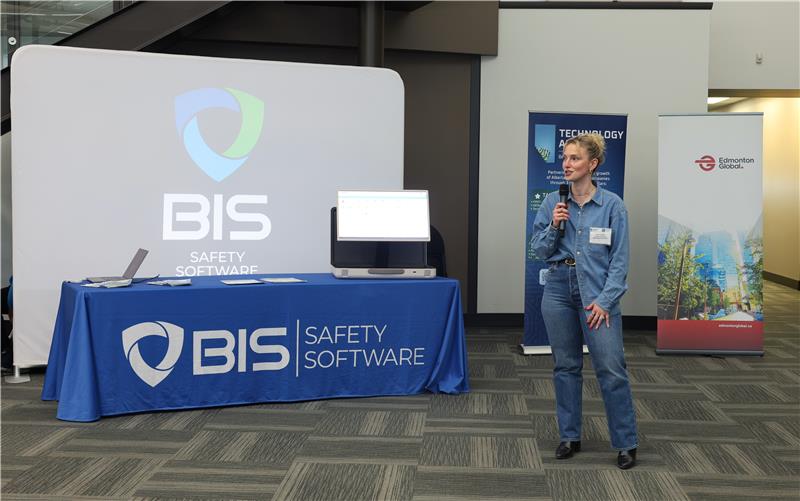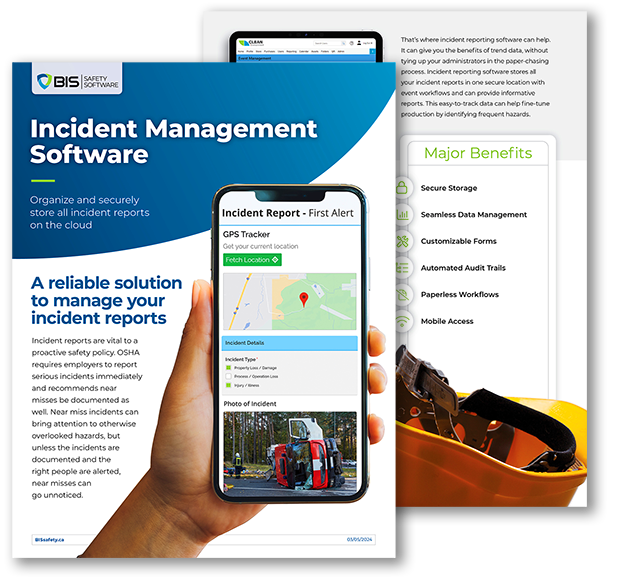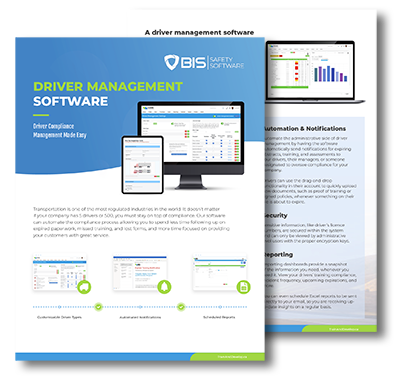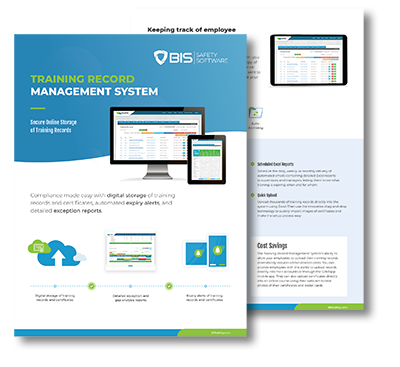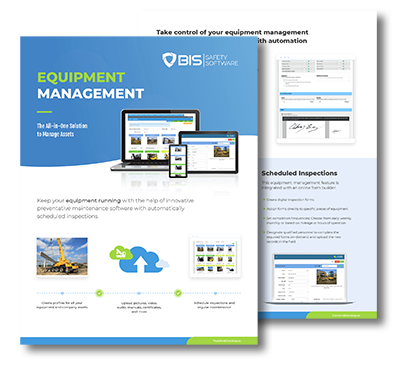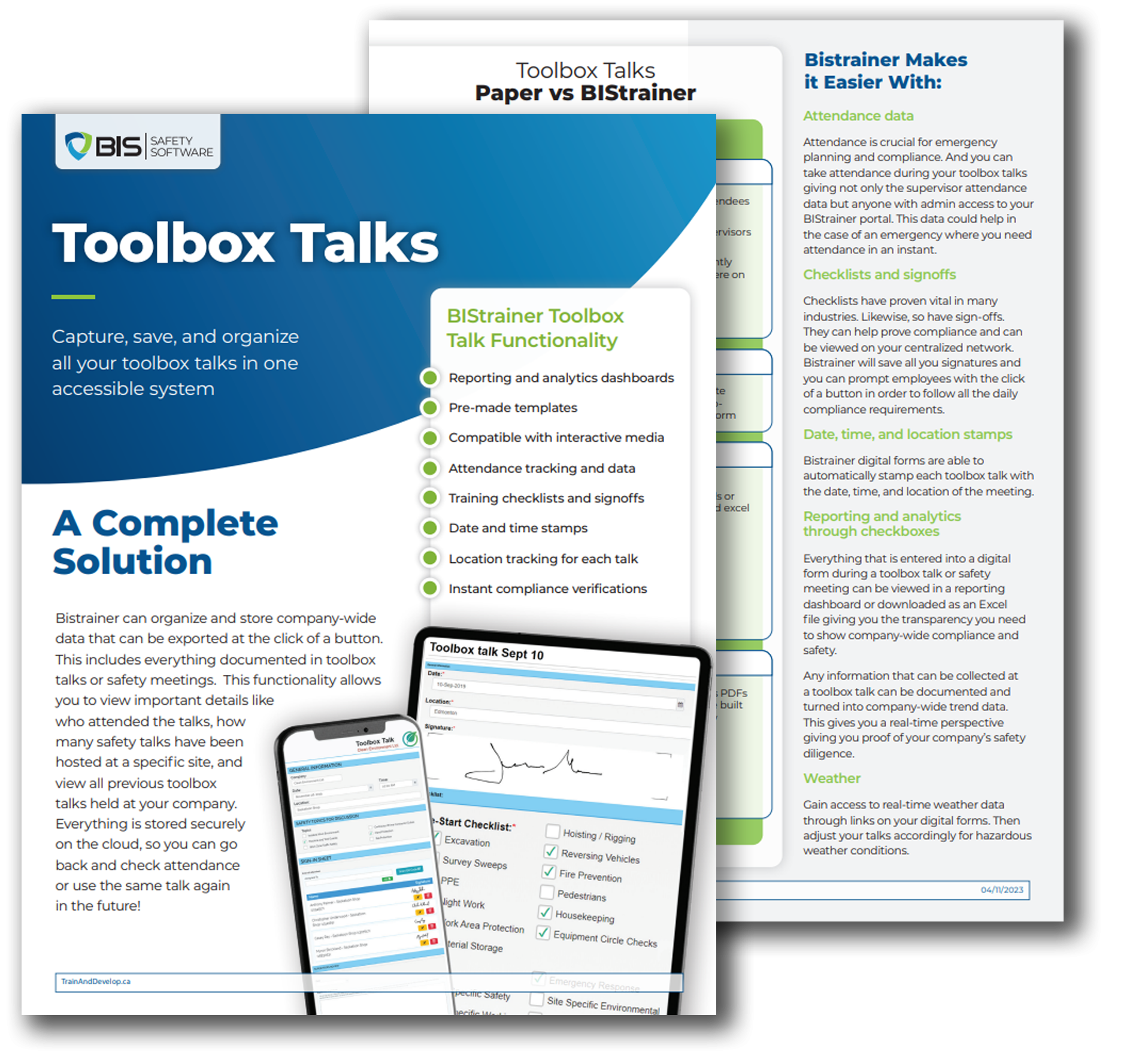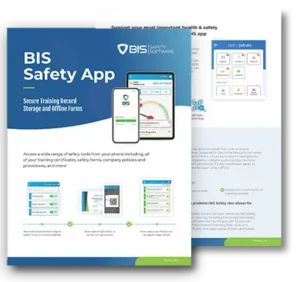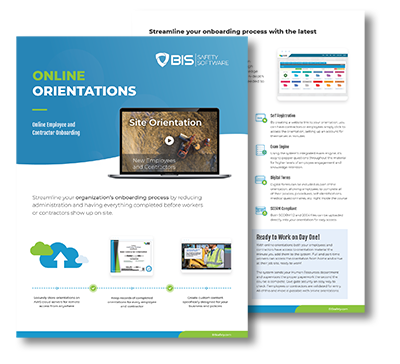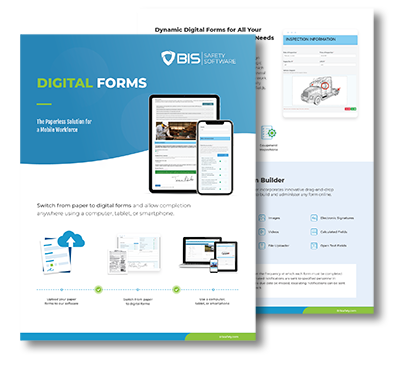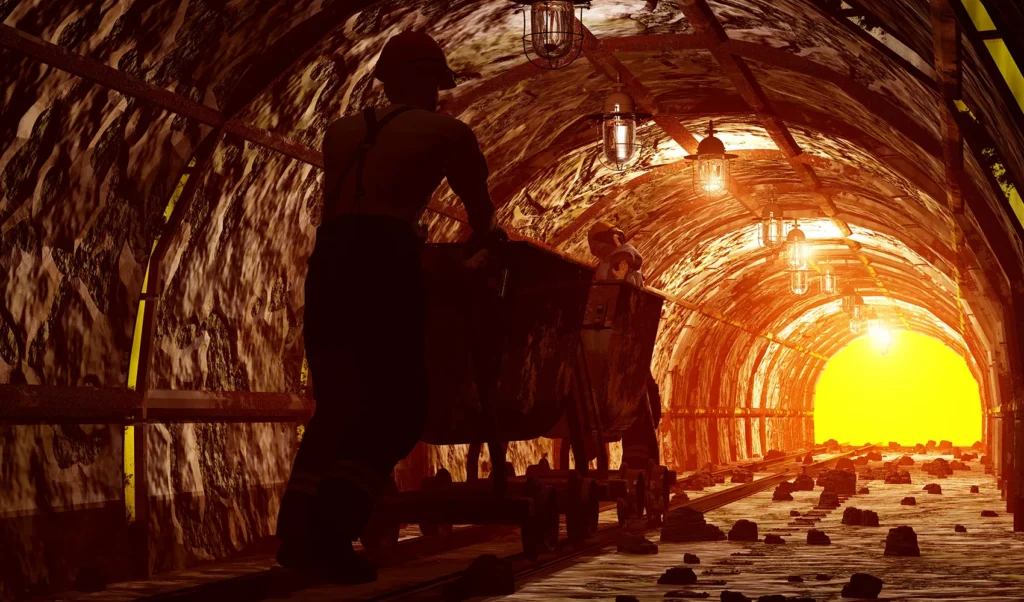
Mining is a crucial part of Canada’s economy, contributing over $90 billion to its GDP and offering employment to more than 600,000 individuals in 2018. However, behind the glimmer of its economic contributions lies a sobering reality – mining ranks as the second-most hazardous industry in the country. Shockingly, nearly 47 out of every 100,000 workers in this field face fatal risks. Such statistics underscore the importance of recognizing the dangers inherent in mining work and the necessity of adhering to stringent safety measures.
Today, we delve into the top five risks that workers in the mining industry encounter. These hazards not only pose threats to physical health but also demand careful attention to ensure the safety and well-being of those involved in this vital sector.
Chapter One: Lung Damage – Protecting Miners’ Respiratory Health
Picture this: miners toiling away in dusty underground tunnels, each breath potentially laden with harmful particles that threaten their respiratory health. In the mining industry, lung damage looms as a significant risk, with grave consequences for those exposed. Let’s delve deeper into this hazard and explore the statistics that underscore its severity.
List of Lung Disorders Associated with Mining:
- Black Lung Disease (Coal Workers’ Pneumoconiosis): Mining coal exposes workers to coal dust, which, when inhaled over time, can lead to the development of black lung disease. Also known as coal workers’ pneumoconiosis, this condition causes scarring of the lungs and can result in symptoms such as coughing, shortness of breath, and chest pain.
- Silicosis: Miners exposed to crystalline silica dust, commonly found in mining environments, are at risk of developing silicosis. This occupational lung disease occurs when silica particles are inhaled, causing inflammation and scarring of the lung tissue. Symptoms may include coughing, difficulty breathing, and fatigue.
- Chronic Bronchitis: Prolonged exposure to dust, fumes, and other respiratory hazards in mining environments can increase the risk of developing chronic bronchitis. This condition is characterized by inflammation of the airways, leading to symptoms such as persistent coughing, excessive mucus production, and difficulty breathing.
- Lung Cancer: Miners exposed to carcinogenic substances, such as radon gas and diesel exhaust, are at an increased risk of developing lung cancer. Radon, a radioactive gas produced by the decay of uranium, can accumulate to unsafe levels in poorly ventilated mining environments, while diesel exhaust contains harmful chemicals known to cause cancer.
- Asthma: Exposure to dust, chemicals, and other respiratory irritants in mining operations can trigger or exacerbate asthma symptoms in susceptible individuals. Occupational asthma, often characterized by wheezing, chest tightness, and shortness of breath, can significantly impact miners’ respiratory health and overall well-being.
Common Minerals Associated with Lung Disorders in Mining:
- Coal Dust: Inhalation of coal dust, generated during coal mining activities, can lead to the development of black lung disease (coal workers’ pneumoconiosis) and other respiratory conditions.
- Silica Dust: Crystalline silica dust, produced during the extraction and processing of minerals such as quartz, can cause silicosis and other lung disorders in miners exposed to high levels of airborne silica particles.
- Asbestos: While less prevalent in modern mining operations, asbestos exposure remains a concern in older mines and during the demolition or renovation of mining infrastructure. Inhalation of asbestos fibers can lead to the development of asbestos-related lung diseases, including asbestosis and mesothelioma.
- Radon Gas: Radon, a radioactive gas released during the decay of uranium in soil and rock, can accumulate to unsafe levels in underground mining environments. Prolonged exposure to radon gas increases the risk of lung cancer among miners.
- Diesel Exhaust: Miners working with diesel-powered equipment may be exposed to diesel exhaust, which contains harmful substances known to cause respiratory and cardiovascular diseases, including lung cancer.
Common Minerals Associated with Lung Disorders in Mining:
- Coal Dust: Inhalation of coal dust, generated during coal mining activities, can lead to the development of black lung disease (coal workers’ pneumoconiosis) and other respiratory conditions.
- Silica Dust: Crystalline silica dust, produced during the extraction and processing of minerals such as quartz, can cause silicosis and other lung disorders in miners exposed to high levels of airborne silica particles.
- Asbestos: While less prevalent in modern mining operations, asbestos exposure remains a concern in older mines and during the demolition or renovation of mining infrastructure. Inhalation of asbestos fibers can lead to the development of asbestos-related lung diseases, including asbestosis and mesothelioma.
- Radon Gas: Radon, a radioactive gas released during the decay of uranium in soil and rock, can accumulate to unsafe levels in underground mining environments. Prolonged exposure to radon gas increases the risk of lung cancer among miners.
- Diesel Exhaust: Miners working with diesel-powered equipment may be exposed to diesel exhaust, which contains harmful substances known to cause respiratory and cardiovascular diseases, including lung cancer.
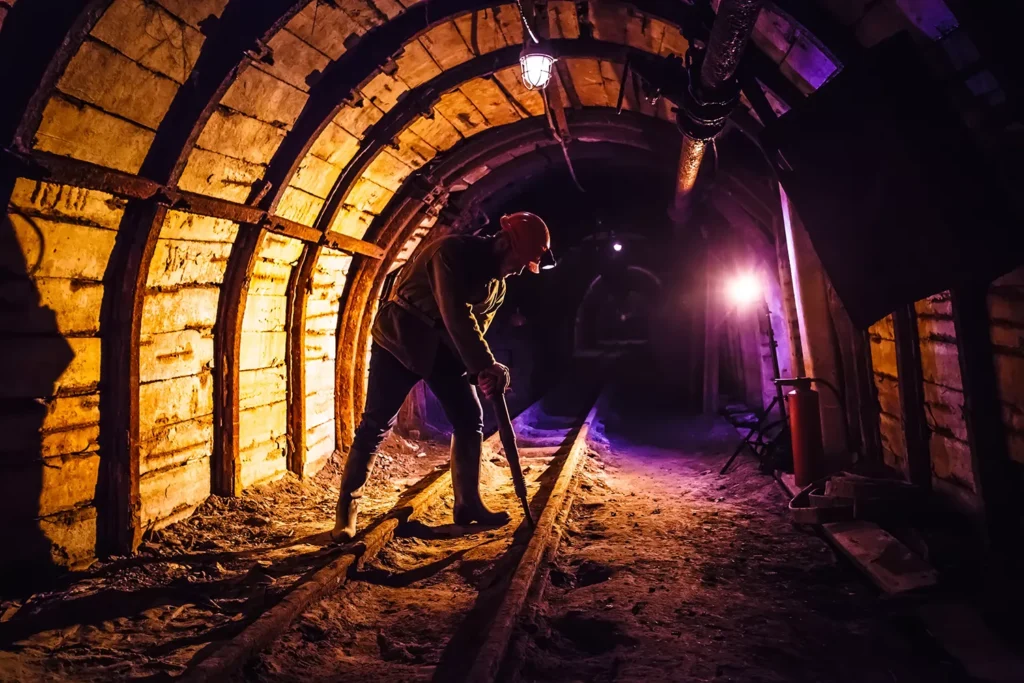
Chapter Two: Hearing Damage – Safeguarding Miners’ Hearing
In the depths of mining operations, amidst the clangour of machinery and the rumble of transportation, miners face a silent but significant threat – hearing damage. The incessant exposure to high noise levels poses a grave risk to miners’ auditory health, with potential consequences ranging from temporary discomfort to permanent hearing loss. Let’s delve into the statistics that underscore the severity of this hazard and explore strategies for mitigating its impact.
According to a report by the Canadian Institute for Health Information (CIHI), mining ranks among the top industries with the highest prevalence of noise-induced hearing loss (NIHL). Alarmingly, approximately 42% of Canadian miners report exposure to hazardous levels of occupational noise, exceeding the national average for other industries. These findings shed light on the pervasive nature of noise-related risks in mining environments and the urgent need for targeted interventions to protect miners’ hearing.
List of Hearing Conditions Associated with Mining:
- Noise-Induced Hearing Loss (NIHL): Prolonged exposure to high levels of occupational noise, prevalent in mining environments, can lead to permanent hearing damage known as NIHL.
- Tinnitus: Miners may experience a ringing, buzzing, or roaring sensation in their ears, known as tinnitus, as a result of exposure to loud noise.
- Temporary Threshold Shift (TTS): Temporary hearing loss or a decrease in hearing sensitivity, known as TTS, can occur after short-term exposure to high noise levels in mining operations.
- Acoustic Trauma: Sudden exposure to extremely loud noises, such as blasts or machinery malfunctions, can cause immediate damage to the inner ear, leading to acoustic trauma and irreversible hearing loss.
Tools and Equipment Especially Bad for Noise in Mining:
- Drills: Rotary drills and pneumatic drills used in mining operations generate high levels of noise, posing a significant risk to miners’ hearing health.
- Blasting: Explosives used for blasting activities in mining operations produce intense noise levels, contributing to the overall noise exposure experienced by miners.
- Crushers: Crushers and rock-crushing machinery utilized in mining activities emit loud noise levels, particularly during the crushing and grinding processes.
- Heavy Machinery: Large mining equipment, such as loaders, haul trucks, and excavators, produce continuous noise emissions, exposing miners to prolonged periods of high noise levels.
- Ventilation Systems: While essential for maintaining air quality in underground mining environments, ventilation systems can generate significant noise levels, especially in confined spaces.
- Conveyors: Conveyor belts and material transport systems used in mining operations can generate noise from friction, impacting miners working in proximity to these systems.
- Compressors: Air compressors and pneumatic equipment used for drilling, powering tools, and operating machinery emit noise during operation, contributing to overall workplace noise levels.
Regulated Mining:
To address the risks of hearing damage in the mining industry, regulatory bodies such as the Occupational Safety and Health Administration (OSHA) have established guidelines for noise exposure limits and hearing conservation programs. These initiatives emphasize the importance of implementing engineering controls, such as sound insulation and equipment maintenance, to reduce noise levels in mining environments. Additionally, the provision of personal protective equipment (PPE), such as earplugs and earmuffs, plays a crucial role in mitigating miners’ exposure to hazardous noise levels.
Chapter Three: Stress and Fatigue – Understanding the Mental and Physical Toll on Miners
Long Hours and Demanding Tasks:
Mining is synonymous with grueling schedules and physically demanding work. According to a study conducted by the Mining Industry Human Resources Council (MiHR), miners often endure extended shifts and tackle strenuous tasks, such as operating heavy machinery and navigating dark, confined spaces. The relentless nature of mining operations can exacerbate stress and fatigue, placing miners at heightened risk of physical and mental exhaustion.
Impacts on Health and Well-being:
Research has shown that prolonged exposure to stress and fatigue can have profound effects on miners’ health and well-being. A report by the World Health Organization (WHO) highlights the link between chronic stress and a range of adverse health outcomes, including cardiovascular disease, musculoskeletal disorders, and mental health conditions such as depression and anxiety. Moreover, fatigue-related impairment can mimic the effects of intoxication, impairing miners’ cognitive abilities and increasing the likelihood of workplace accidents.
Risk of Incidents and Injuries:
Fatigued miners are not only susceptible to personal injury but also pose a risk to their colleagues and the broader mining community. According to data from the Mine Safety and Health Administration (MSHA), fatigue-related incidents account for a significant proportion of mining accidents, with impaired decision-making and reduced reaction times contributing to the severity of these incidents. Furthermore, a fatigued miner is more likely to cause an incident that injures multiple people, amplifying the potential consequences of workplace fatigue.
Mitigating Risks through Awareness and Intervention:
Recognizing the pervasive nature of stress and fatigue in the mining industry, employers and regulatory bodies have implemented various strategies to mitigate these risks. The Canadian Mining Association (CMA) emphasizes the importance of promoting a culture of safety and well-being in mining operations, advocating for regular breaks, adequate rest periods, and access to support services for miners. Additionally, initiatives such as fatigue management programs and mental health awareness campaigns play a crucial role in raising awareness and addressing the underlying factors contributing to stress and fatigue in the mining workforce.
Looking Ahead: Prioritizing Miner Well-being:
As the mining industry continues to evolve, prioritizing miner well-being remains a critical imperative. By implementing proactive measures, providing comprehensive training, and fostering a supportive work environment, employers can mitigate the risks associated with stress and fatigue and ensure the health and safety of miners in their care.
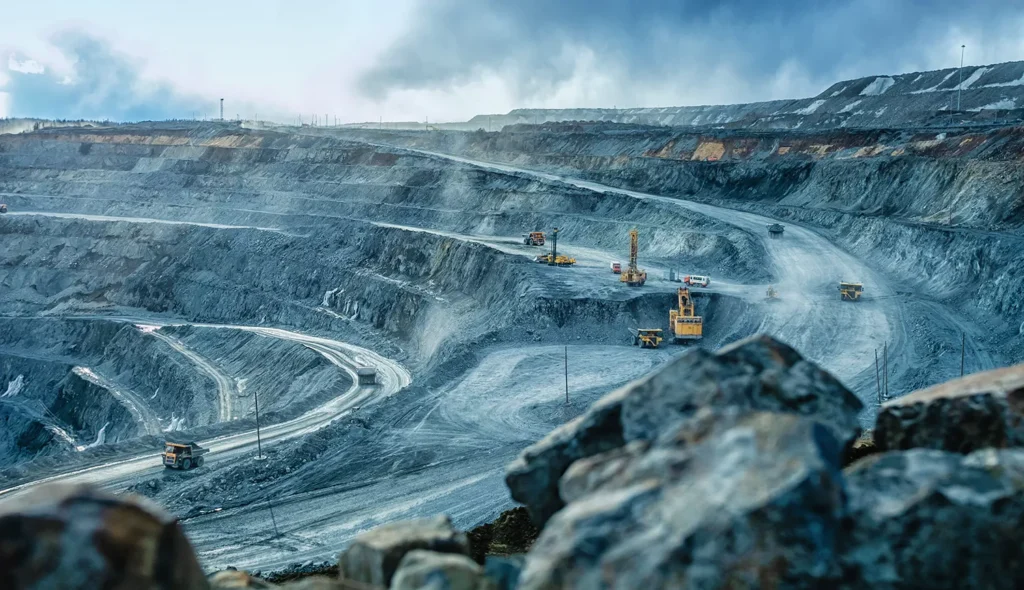
Chapter Four: Radioactive Materials – Understanding the Hidden Threat in Mining
List of Radioactive Materials Associated with Mining:
- Uranium
- Thorium
- Radium
- Radon
Presence of Radon:
Within the depths of mining sites, miners encounter a silent menace – radon, a radioactive gas produced through the natural decay of uranium in soil and rock formations. According to data from the Environmental Protection Agency (EPA), radon is the leading cause of lung cancer among non-smokers and ranks second among smokers. Despite being colourless and odourless, radon poses a significant health risk when it accumulates to unsafe levels in poorly ventilated or confined mining environments.
Associated Health Risks:
Exposure to radioactive materials such as radon can have dire consequences for miners’ health. The Canadian Cancer Society reports that radon exposure is responsible for a significant proportion of lung cancer cases, particularly among individuals working in occupations with high levels of exposure, such as mining. Furthermore, prolonged exposure to radon and other radioactive materials can increase the risk of other cancers and respiratory ailments, underscoring the importance of mitigating these hazards in mining operations.
Identification of Radioactive Materials:
In addition to radon, mining activities may involve the extraction and processing of other radioactive materials, including uranium, thorium, and radium. These substances, while valuable in various industrial applications, pose inherent health risks to miners and surrounding communities if not properly managed. The International Atomic Energy Agency (IAEA) emphasizes the importance of comprehensive radiation monitoring and control measures to minimize the risks associated with the handling and disposal of radioactive materials in mining operations.
Mitigating Risks through Regulation and Monitoring:
Regulatory agencies such as the Nuclear Regulatory Commission (NRC) play a crucial role in overseeing the safe handling and disposal of radioactive materials in mining operations. By enforcing strict regulations and implementing radiation monitoring programs, these agencies aim to safeguard the health and safety of miners and the general public. Additionally, initiatives such as radon mitigation strategies and ventilation systems help to reduce miners’ exposure to harmful radioactive gases in underground mining environments.
Looking Ahead:
Prioritizing Radiation Safety: As the mining industry continues to evolve, prioritizing radiation safety remains paramount. By adhering to stringent regulations, investing in advanced monitoring technologies, and fostering a culture of safety and awareness, mining companies can minimize the risks associated with radioactive materials and ensure the well-being of miners and surrounding communities.
Chapter Five: Lifting Injuries – Safeguarding Miners’ Physical Well-being
Physically Demanding Nature of Mining: Despite advancements in technology, mining remains a physically demanding occupation, with miners frequently required to perform tasks involving repetitive motions and the lifting of heavy loads. The Canadian Centre for Occupational Health and Safety (CCOHS) reports that the manual handling of materials and equipment contributes significantly to the risk of musculoskeletal injuries among miners.
Prevalence of Lifting Injuries:
Statistics from the Mine Safety and Health Administration (MSHA) reveal that improper lifting techniques are a leading cause of workplace injuries in the mining industry. In fact, lifting-related incidents account for a significant proportion of reported accidents, resulting in both direct costs for medical care and lost workdays and indirect costs for employers.
Types of Injuries:
Lifting injuries in mining operations can range from minor strains and sprains to more severe musculoskeletal disorders, such as herniated discs and torn ligaments. The National Institute for Occupational Safety and Health (NIOSH) highlights the importance of proper lifting techniques and ergonomic interventions to prevent these injuries and promote miners’ physical well-being.
Impact on Productivity:
In addition to the personal toll of lifting injuries, there are significant implications for productivity and operational efficiency in mining operations. According to research published in the Journal of Safety Research, musculoskeletal injuries resulting from improper lifting techniques contribute to downtime and absenteeism, reducing overall productivity and increasing operational costs for mining companies.
Mitigating Risks through Education and Training:
Recognizing the prevalence and impact of lifting injuries in the mining industry, regulatory agencies and employers have implemented various strategies to mitigate these risks. The Occupational Safety and Health Administration (OSHA) emphasizes the importance of comprehensive training programs that educate miners on proper lifting techniques, ergonomic principles, and the use of mechanical aids to reduce the risk of injuries. Additionally, ergonomic assessments and workplace modifications can help to create safer working environments and prevent lifting-related accidents.
Online Miner Training Courses:
By prioritizing education, training, and ergonomic interventions, mining companies can mitigate the risks of lifting injuries and promote the physical well-being of miners on-site.
Related Articles
- All Posts
- #EmergencyPreparedness
- 2025 safety trends
- 360 Immersive
- 360immersive
- 6S Safety
- accident prevention
- accidental careers
- accountability
- adjustable workstations
- adult education
- AFAD
- AI automation
- AI implementation
- AI in business
- AI in operations
- AI in Safety
- AI podcast
- AI strategy
- AI transformation
- Alberta safety
- Alberta safety courses
- Allan James Moore
- Anhydrous Ammonia
- artificial intelligence
- asking for help
- audit findings
- audit readiness
- Audit Reporting
- automation in safety
- automation strategy
- avoidable injuries
- awareness
- Aztec Safety
- back strain
- BambooHR integration
- Bear safety
- behavior-based safety
- Behavioral Safety
- behavioural safety
- biometric sensors
- BIS Podcast
- BIS Safety Podcasts
- BIS Safety Software
- BIS Safety Spotlight
- black holes
- Blame Culture
- Blue Angels
- BP Texas City Explosion
- Brave Leadership
- Brett Burkard
- bump test
- burnout
- business automation
- calibration
- call before you dig
- Canadian OHS
- Canadian safety
- Canadian safety history
- Canadian safety standards
- Canadian wilderness safety
- carbon monoxide
- Cargo Securement
- Carolynne Heron
- CCOHS
- chemical
- Chemical Safety
- chemical vapors
- chronic injuries
- chronic pain
- cloud-based safety tools
- Coming Soon
- Commercial Vehicle Safety
- Communication Systems
- community safety programs
- Competency in Safety
- complacency in safety
- Compliance
- compliance courses
- Compliance In Canada
- compliance issues
- Compliance management
- Compliance Reporting
- compliance software
- compliance tools
- compliance tracking
- compliance training
- compliance vs protection
- confined space
- Construction advocacy
- Construction education
- Construction industry
- construction safety
- construction safety training
- construction technology
- continuous improvement
- continuous safety improvement
- corporate culture
- corporate training
- corrective actions
- CPR and AED
- crane
- CSA standards
- Customer Spotlight
- Customer Spotlight Kevin Swinden Global Hazmat Safety Culture Hazmat Management Dangerous Goods Competency in Safety Workplace Risk Mitigation BIS Training Clients Canadian EHS
- customized training
- daily trip inspection
- Damage Prevention
- Dangerous Goods
- dangerous goods classification
- Danny Sellers
- data-driven safety
- debriefing
- Decision Analysis
- Decision quality
- defect management
- defect tracking
- defensive driving
- DEI in onboarding
- digital badges
- digital compliance
- digital FLHA
- digital forms
- Digital Hazard Reporting
- Digital Onboarding
- digital safety
- Digital Safety Audits
- digital safety meetings
- Digital safety systems
- digital safety tools
- digital safety transformation
- digital site access
- Digital Training Tools
- digital transformation
- DMS features
- document control
- document management system
- Dr. Joanna Pagonis
- Dr. Tom Krause
- driver file management
- driver training
- driving instructor program
- DTRMS
- e-learning
- e-learning tools
- eadership in safety
- early intervention
- education technology
- EHS
- EHS Adoption
- EHS Compliance
- EHS digital solutions
- EHS Inspections
- EHS Onboarding
- EHS software
- EHS systems
- EHS technology
- EHS tools
- Einstein
- electrical safety
- elite performance
- Emergency Action Plan
- emergency preparedness
- emergency procedures
- emergency response
- emergency supplies
- emotional training
- employee behavior
- employee engagement
- employee health
- Employee onboarding
- employee preparedness
- Employee Readiness
- employee safety
- employee training
- employee trust
- Employer Responsibilities
- Energy Isolation
- engaging toolbox meetings
- equipment inspections
- ergonomic consulting
- ergonomic design
- ergonomic risks
- ergonomics
- Evacuation Procedures
- evidence collection
- EWI Works
- excavator safety essentials
- exoskeleton
- exoskeletons
- failure analysis
- fall prevention
- fall protection
- fast onboarding
- field experience
- field level hazard assessments
- field operations
- field safety
- field safety assessments
- field safety communication
- field safety leadership
- field safety services
- Field Safety Technology
- field safety tools
- Field-Friendly Software
- Fire Drills
- fire prevention
- Fire Safety Training
- first aid
- first aid kit
- first week on the job
- first workplace injury
- flaggers
- Fleet Compliance
- fleet management
- fleet safety
- FLHA engagement
- FLHA Integration
- FLHA software
- floor mats
- FMEA
- freight
- Frontline Engagement
- frontline safety
- fuel handling
- future of work
- gas detection
- gas monitors
- Gas Safety
- Global Hazmat
- global onboarding
- Good Samaritan laws
- gravitational waves
- gut feeling in safety
- hand injuries
- handling hazardous materials
- hands-on training
- hazard analysis
- hazard assessment compliance
- hazard assessment software
- Hazard Awareness
- hazard communication
- Hazard Identification
- hazard prevention
- hazard recognition
- hazard reporting
- hazard reporting technology
- hazard tracking
- Hazardous Energy Control
- Hazardous Materials
- Hazmat Management
- Health & Safety Podcast
- health and safety
- hearing loss prevention
- hearing protection
- heavy equipment operation
- heavy equipment safety
- hidden workplace hazards
- high voltage systems
- High‑performance teams
- HR automation
- HR software
- HR technology
- human factors
- human factors in safety
- human in the loop
- Human Performance
- human vs machine
- human-centered design
- human-centered safety
- Humble leadership
- humor in safety
- hydrogen sulfide
- ICBC certification
- ice melt
- identification
- immersive learning
- Imposter Syndrome
- incident data
- incident investigation
- incident management
- incident prevention
- incident reporting
- inclusive leadership
- industrial AI
- Industrial Hygiene
- industrial safety
- Industrial Training
- influence vs control
- Infrastructure Risk
- injury consequences
- injury prevention
- injury prevention tips
- injury recovery
- injury reporting
- injury response
- injury response plan
- inspections
- instant hazard logging
- instructor development
- internal audits
- international workforce
- interpreting safety data
- invisible dangers
- ISO standards
- Jeff Mulligan
- Jennifer Lastra
- job site accountability
- job site hazards
- job site risks
- job site safety
- jobsite readiness
- Jody Young
- KBR Safety Training
- Kevin Swinden
- labor movement
- ladder safety
- Leadership
- leadership accountability
- leadership and empathy
- Leadership by example
- Leadership in Safety
- Leadership Management
- leadership messaging
- Leadership trust
- Lean Manufacturing
- Lean Workplace
- learning from incidents
- learning management
- lifting techniques
- lighting
- LIGO
- Linda Miller
- LMS
- LMS features
- LMS software
- Load Securement
- Lock Out Tag Out
- lockout tagout
- Lone Worker Safety
- lone workers
- LOTO
- LOTO Training
- machine learning
- Machine Safety
- Maintenance Safety
- mental health at work
- MI Safety
- microlearning
- Mike Schwartz
- minor injuries
- mobile FLHA solution
- mobile onboarding
- Mobile Safety Apps
- Mobile Safety Platforms
- mobile safety reporting
- Mobile Safety Tools
- mobile safety tools safety compliance solutions
- MOU Standards
- mould hazards
- mould prevention
- movement in workplace
- multilingual training
- MyZone AI
- Near Miss Reporting
- new hire experience
- New Hire Safety
- New Worker Training
- new workers
- no-blame investigations
- noise exposure
- nonconformance
- Northern BC
- NRCA
- NSC Standard 13
- occupational fatigue
- occupational hazards
- occupational health
- Occupational Health and Safety
- occupational health risks
- occupational safety
- occupational therapy
- OH&S
- OHS
- OHSA
- oil and gas safety
- omni-training
- onboarding Canada
- onboarding safety
- Onboarding Software
- online learning
- online orientation software
- Online safety training
- operational efficiency
- Operational Excellence
- Operational risk
- organizational culture
- organizational safety
- OSHA compliance
- OSHA standards
- outdated practices
- Outdoor work hazards
- overconfidence
- overhead crane courses
- pain awareness
- paperless safety reporting
- paperless safety talks
- personal protective equipment
- Pharmaceutical Safety
- physics careers
- pipeline safety
- playbook software
- podcast
- post-accident review
- post-incident protocol
- PPE
- PPE enforcement
- PPE improvement
- pre-trip inspection
- predictive analytics
- pretrip inspection
- preventing shortcuts
- preventive action
- proactive risk management
- proactive safety
- proactive safety culture
- proactive safety measures.
- Proactive Safety Systems
- process improvement
- Professional development
- propane safety
- propane storage
- protective clothing
- psychological hazards
- psychological safety
- quality control
- quality management
- quality standard
- Real Safety Leadership
- real-time hazard reporting
- Real-Time Reporting
- real-time safety
- real-time safety tools
- real-time site data
- recordkeeping
- reduce training costs
- regulatory updates
- repetition in safety
- repetitive motion injuries
- respirator safety
- respirators
- risk assessment
- risk management
- risk mitigation
- risk prevention
- Risk Prevention Tools
- risk reduction
- road safety
- Robin Postnikoff
- ROI with AI
- root cause analysis
- root cause correction
- routine task risks
- safe excavation
- safe habits
- safe transport
- safe work habits
- safe work practices
- safety
- safety accountability
- safety advice
- safety article
- Safety Audit Software
- safety automation
- safety awareness
- safety best practices
- safety communication
- safety compliance
- Safety Conversations
- safety culture
- safety data
- safety data sheets
- safety documentation
- safety engagement
- safety follow-up
- safety gear
- safety gloves
- safety goggles
- safety habits
- safety improvement
- safety incentives
- safety innovation
- safety insights
- safety inspection
- safety instinct
- Safety Leaders
- safety leadership
- Safety Leadership Podcast
- safety legislation
- safety lessons
- safety management
- safety management system
- safety management systems
- safety metrics
- safety mindset
- safety motivation.
- safety myths
- safety onboarding
- safety planning
- safety podcast
- safety procedure updates
- Safety Procedures
- safety process improvement
- safety professionals
- safety reporting
- safety review process
- safety shortcuts
- safety software
- Safety Spotlight
- Safety strategy
- safety systems
- safety technology
- safety theater
- safety tips
- safety tools
- safety training
- safety transformation
- safety transparency
- Sarah Anderson
- scaffold safety
- scaffolding inspections
- scalable training solutions
- Scott Lyall
- shipping documentation
- silent dangers
- silica dust
- Sinogap Solutions
- slips trips falls
- slow-building hazards
- smart helmets
- smart PPE
- smart safety systems
- smart safety tools
- SOPs
- space science
- Spencer McDonald
- Standardized Work
- stop work authority
- storytelling and safety
- storytelling in safety
- supervisor training
- system safety
- Systems Thinking in Safety
- tablet-based toolbox talks
- TCP safety
- TDG
- team communication
- team performance
- teamwork
- tech and ergonomics
- tech in safety
- tech-enabled learning
- Thinking Driver
- Titan Environmental
- Tom Krause
- toolbox talks tablets
- Total Recordable Injury Formula
- tough guy mentality
- toxic air
- traction control
- traffic control
- traffic control plan
- training
- training courses
- Training integration
- training management
- training matrix
- training record management
- training records
- training software
- transportation
- transportation of dangerous goods
- Transportation Regulations
- Transportation Safety
- Trucking Regulations
- trust
- Trust and Accountability
- trust at work
- Underground infrastructure
- underground utilities
- unseen workplace threats
- Upward communication
- user experience
- utility line marking
- utility locating
- Utility safety
- Utility Safety Partners
- values-based onboarding
- vehicle safety
- version control
- veteran advice
- Virtual Reality
- VR safety training
- VR Technology
- walkway maintenance
- wearable technology
- Weights and Dimensions
- WHMIS
- Wildlife awareness
- winter safety
- witness statements
- women in leadership
- work zone safety
- work-alone training
- work-related injuries
- worker accountability
- worker advocacy
- worker fatigue
- worker protection
- worker safety
- worker safety habits
- worker safety tips
- worker trust
- worker wellbeing
- workers' rights
- Workforce Automation
- workforce compliance
- Workforce development
- workforce engagement
- workforce management
- Workforce Readiness
- workforce training
- Working Alone Canada
- workplace accidents
- workplace air quality
- workplace best practices
- workplace certification
- workplace compliance
- Workplace Culture
- workplace hazard prevention
- Workplace Hazard Tracking
- workplace hazards
- workplace health
- workplace incident response
- workplace injuries
- workplace injury prevention
- workplace inspections
- workplace leadership
- workplace mindset
- Workplace Organization
- workplace readiness
- workplace risk factors
- workplace risk management
- Workplace Risk Mitigation
- Workplace safety
- Workplace Safety Compliance
- workplace safety culture
- Workplace Safety Leadership
- workplace safety rules
- workplace safety tech
- workplace safety tips
- Workplace Safety Tools
- workplace safety training
- workplace stress
- workplace tiredness
- workplace wellness
- WSPS
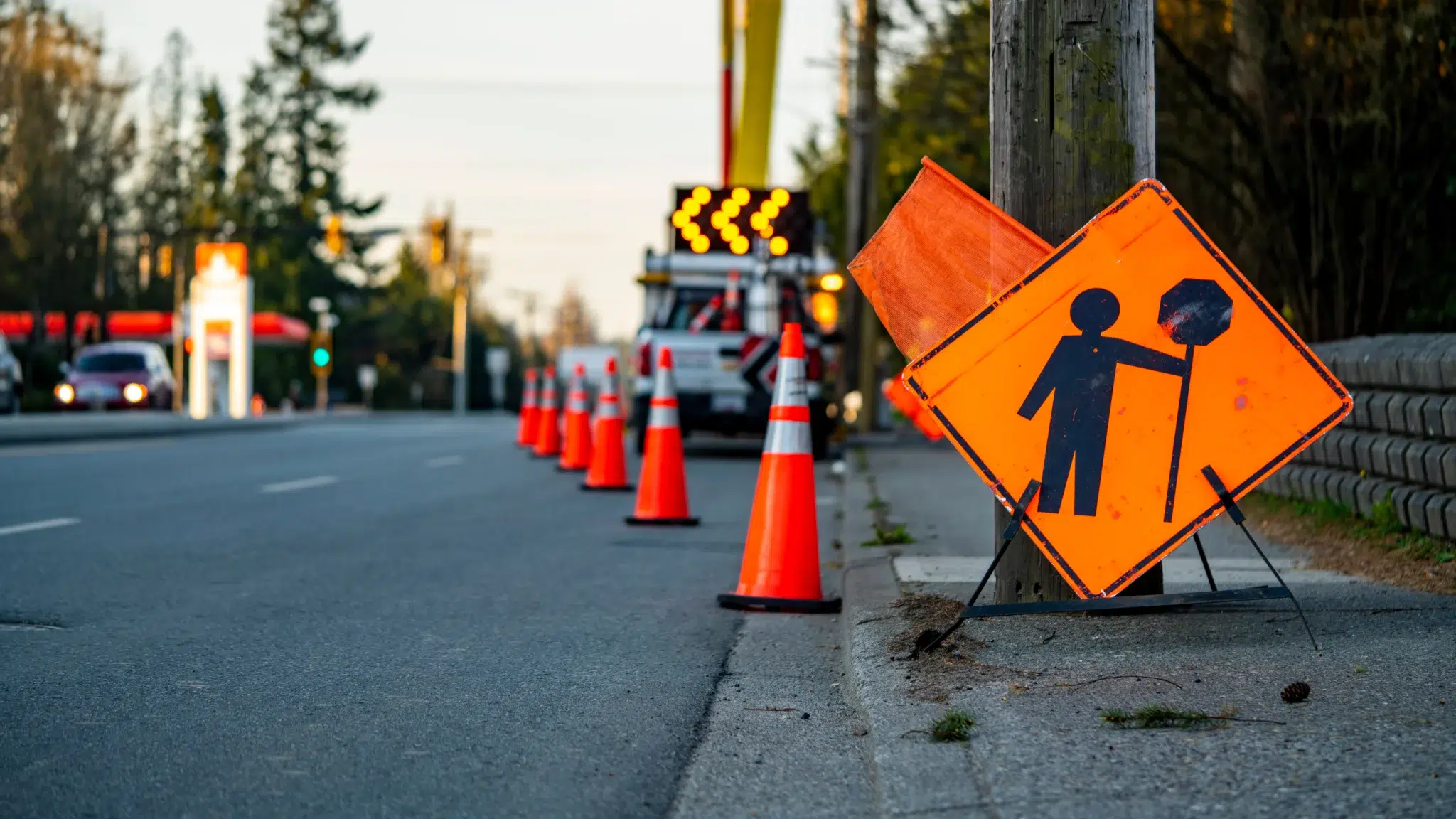
Traffic control is the critical link between moving traffic and active work zones. From trained TCPs and clear communication to...
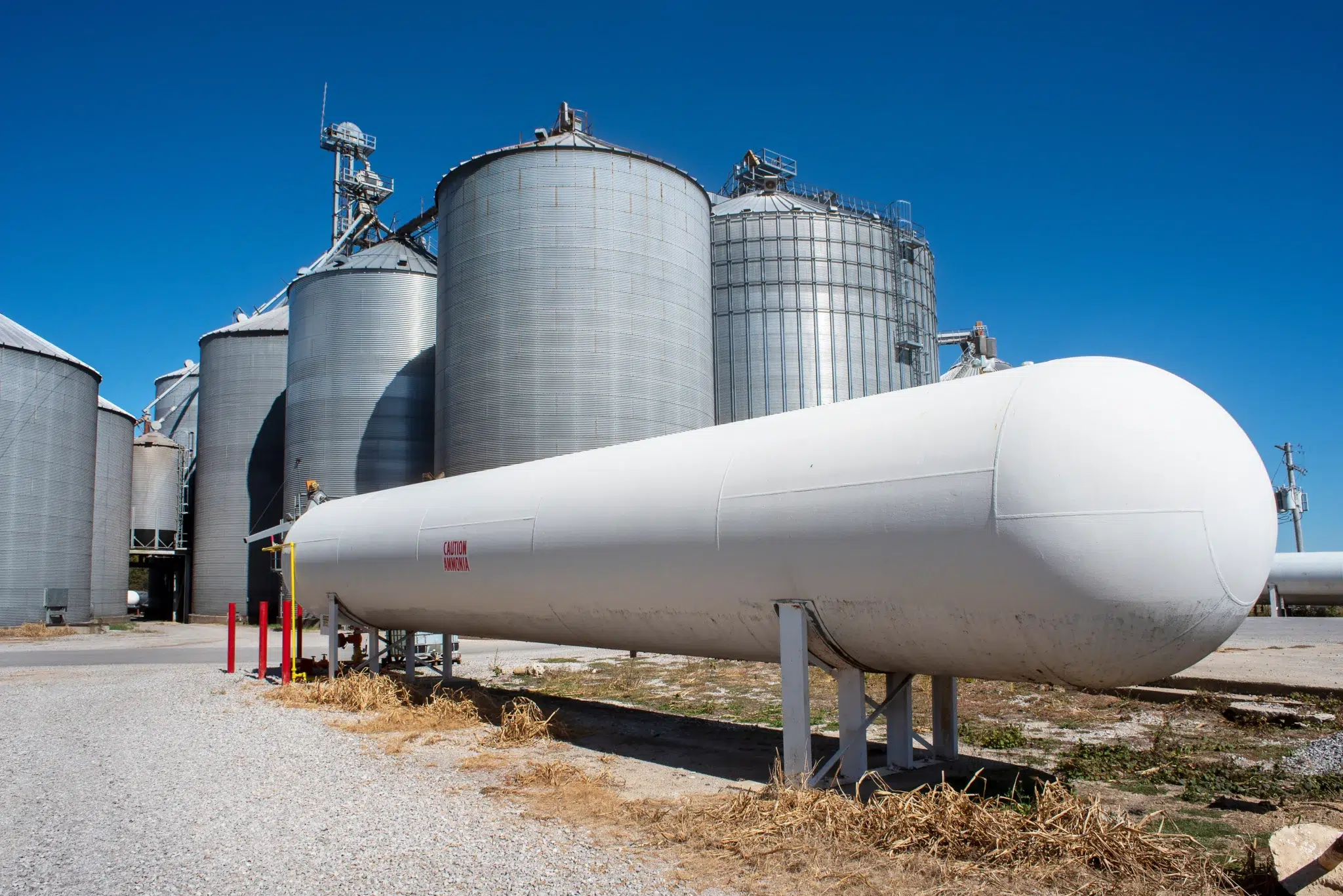
From storage conditions to emergency response, safe work practices around anhydrous ammonia protect workers from invisible but powerful hazards. Learn...

Uncontrolled energy can turn any job site into a danger zone. Learn how Lockout/Tagout (LOTO) procedures safeguard workers, reduce incidents,...









